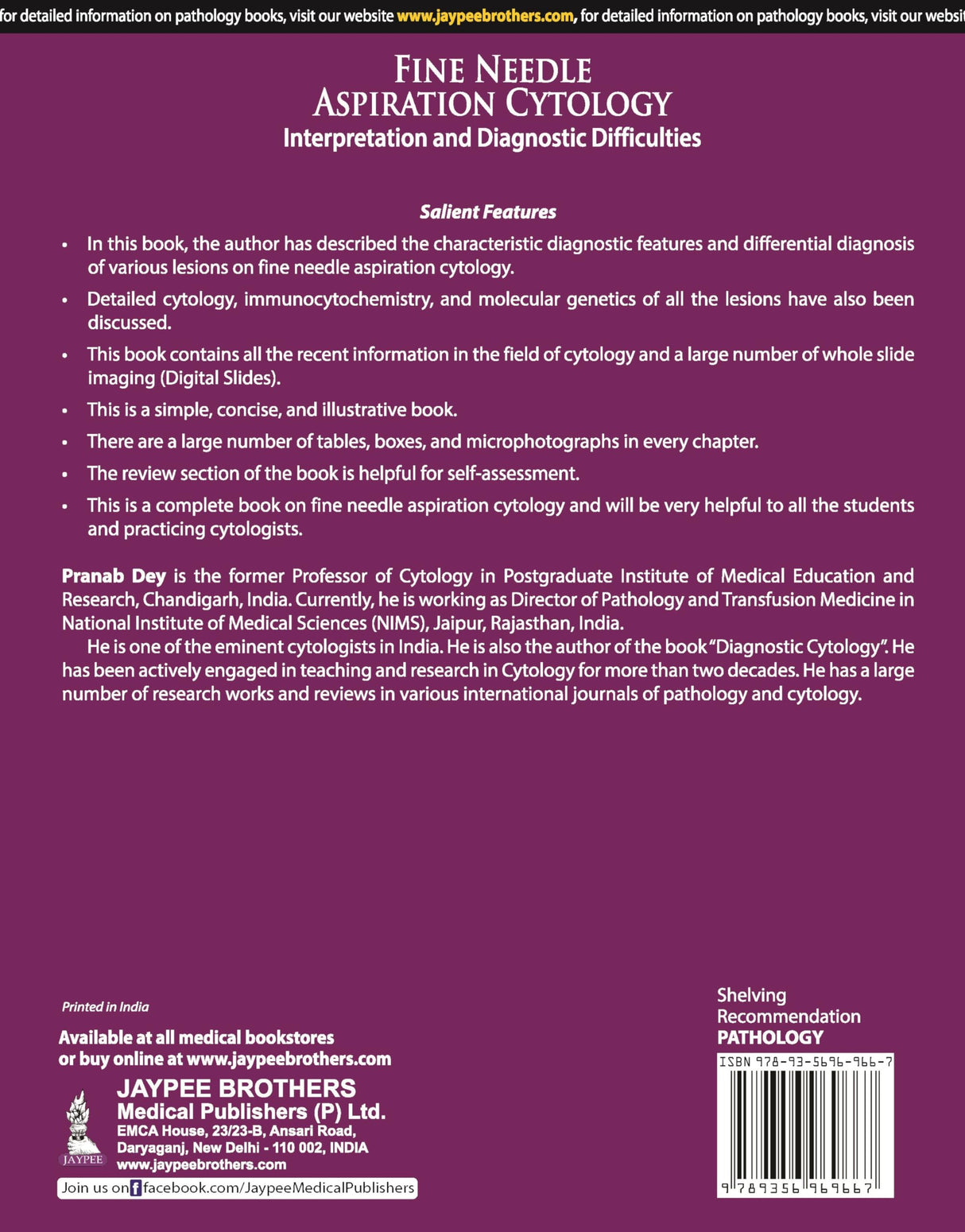FINE NEEDLE ASPIRATION CYTOLOGY: INTERPRETATION AND DIAGNOSTIC DIFFICULTIES
FINE NEEDLE ASPIRATION CYTOLOGY: INTERPRETATION AND DIAGNOSTIC DIFFICULTIES is backordered and will ship as soon as it is back in stock.
Couldn't load pickup availability
Genuine Products Guarantee
Genuine Products Guarantee
We guarantee 100% genuine products, and if proven otherwise, we will compensate you with 10 times the product's cost.
Delivery and Shipping
Delivery and Shipping
Products are generally ready for dispatch within 1 day and typically reach you in 3 to 5 days.
Book Details
-
Author: Dey, Pranab
-
Brand: Jaypee Brothers Medical Publishers
-
Color: Four Color
-
Edition: 3 Revised Edition
-
Binding: Paperback
-
Number of Pages: 636
-
Release Date: 27-10-2023
-
ISBN: 9789356969667
-
Package Dimensions: 10.5 x 8.3 x 0.9 inches
-
Languages: English
About the Book
This revised and expanded third edition of Fine Needle Aspiration Cytology: Interpretation and Diagnostic Difficulties provides an in-depth, organ-wise exploration of FNAC—a vital, minimally invasive diagnostic procedure widely used for evaluating tumors, inflammatory lesions, and superficial masses. Across 21 comprehensive chapters, the book covers cytological features, differential diagnoses, ancillary techniques, and molecular aspects for a wide range of lesions involving the head and neck, breast, thyroid, lymph nodes, soft tissue, skin, bone, and central nervous system.
Each chapter is enriched with detailed micrographs, illustrative tables, summary boxes, and updated diagnostic criteria that help readers understand subtle nuances and challenging scenarios in cytopathology. This edition incorporates the latest developments in FNAC technology, immunocytochemistry, and molecular diagnostics, reflecting current best practices.
A dedicated review section at the end of the book strengthens comprehension and supports exam preparation, making this an essential reference for pathology residents, cytotechnologists, clinicians, and practicing cytopathologists seeking clarity in interpretation and improved diagnostic accuracy.







